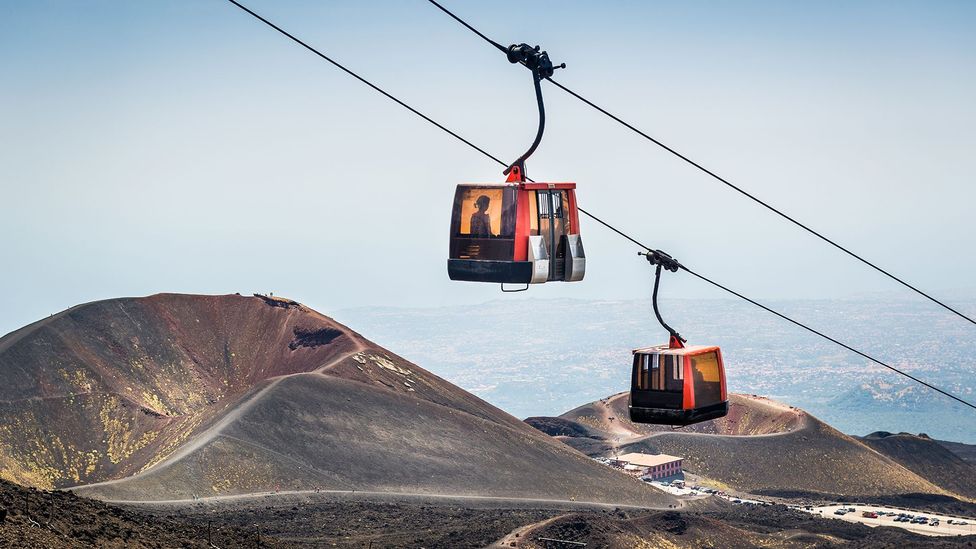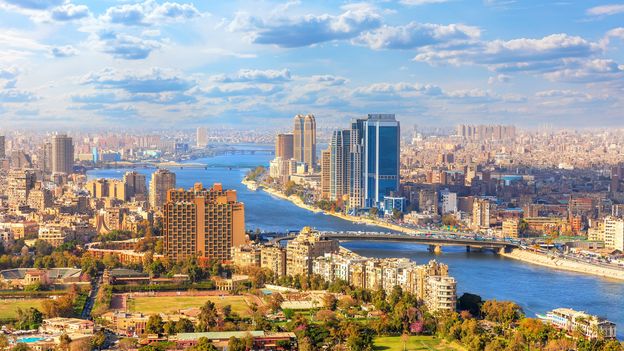Mt Etna: The most active volcano on Earth
(Image credit: Blueplace/Getty Images)
Mt Etna looms large over daily life in Sicily. And for the people here, living in its shadow is a complex and emotional undertaking.
I
In Sicily’s port city of Catania, an alarm went off inside the scientific research centre, the National Institute of Geophysics and Volcanology (INGV). A large wall covered with dozens of screens showed a tapestry of charts, figures, maps and live video streams, but it was one particular screen which drew the scientists’ attention.
“An earthquake, on the south side of Etna,” said volcanologist Boris Behncke as he pointed to a line that violently jerked to a squiggle. Behncke knew that squiggles like these could mean big things to the people living in Etna’s shadow.

Centuries of lava flows have left destructive deposit on the landscape (Credit: aapsky/Getty Image)
Here, like in many places on the east side of Sicily, Mt Etna looms large over daily life. According to Behncke, it is “currently the most active volcano on Earth” and even at over 30km away, it is a visible presence and a volatile threat. However, the bigger threat is actually an earthquake closer to the city, which is a significant risk in this seismically active region
You may also be interested in:
• The Italian island of perpetual fire
• Italy’s inspiring response to the coronavirus
• The gender fight behind Sicily’s most iconic snack
In the village of Nicolosi, less than 20km downhill from Etna, worshiper Marisa Mazzaglia headed to church. For a country that is overwhelmingly Catholic, on this island, religious practice is particularly high. Inside the churches, large paintings depict the powerful volcano and worshipers kneeling in its shadow. At the top of a hill overlooking Nicolosi, a monument stands at the place where, in 1776, a lava flow was halted when, as legend has it, the cloak of a saint was laid on the floor in the path of the proceeding lava.
Mt Etna: The most active volcano on Earth
The foundations of Mazzaglia’s own spirituality were laid during the lava flow from an eruption in 2001. As it creeped closer, she joined her fellow villagers of Nicolosi, all standing in silence, as the bones of the saints were brought out of the church in the hope that once again, a “supernatural breath” would save them. For her, this moment became an epiphany.
“Here more than anywhere else on Earth, you strongly feel the force of nature,” Mazzaglia said. “We are so used to natural disruptions that, on one hand they make you admire nature, but on the other you turn to the High, the Most High.”
The risk becomes greater closer to Etna’s summit. People making the journey to see the volcano up close must take a winding road flanked on either side by centuries of lava flows which have left mile upon mile of destructive deposit on the landscape. On the south side of the volcano, at the highest point you can drive to, a small cluster of shops and restaurants have built up around the ski lifts which take people up closer to the summit.

Ski lifts take people up closer to Etna’s summit (Credit: Alexander Nikiforov/Getty Images)
In 1983, a river of lava flowed down the south side of Etna. When it met the first building, the restaurant La Cantoniera, it split it in two, ultimately flattening the building entirely. Alfio Carone, who co-owns the restaurant, has displayed the catastrophe in a series of framed pictures across the wall of his now reconstructed restaurant: “It was destroyed in 1983 and rebuilt in 1985”, he explained. “We built the new construction over the still-warm lava.” For some people, this might seem like a bad location on which to rebuild, but for Carone there is more than logic to consider: “We are not afraid to start again on an active volcano like Etna because we already have a brotherhood with this great volcano and we live well like this.”
After the alarm at INGV headquarters, Behncke sent an email to Francesco Impellizzeri in Nicolosi. Impellizzeri works for the Civil Protection, and it will be his job to use the scientific measurements given by Behncke to communicate up the chain of command recommendations in the face of possible eruptions. This way, precautions and closures are put in place to protect locals and travellers on the island. Impellizzeri is a straight-talking, serious man. Speaking in his office, he talked about official process and practicalities based on scientific data. They are expecting no Godly miracles here.

Mt Etna is considered the most active volcano on Earth (Credit: Blueplace/Getty Images)
But still, above his desk a crucifix hangs on the wall and in the corner, among his collection of a dozen or so rocks of Etna lava sits a miniature nativity scene. For the people here, living in the shadow of Etna is a complex and emotional undertaking.
For more on this and other stories watch The BBC Travel Show – every weekend on the BBC News Channel and BBC World News.
BBC’s Travel Show brings you the latest insider travel news, a wealth of destinations, amazing experiences and features and practical hints, tips and advice for your holidays.
If you liked this story, sign up for the weekly bbc.com features newsletter called “The Essential List”. A handpicked selection of stories from BBC Future, Culture, Capital and Travel, delivered to your inbox every Friday.















